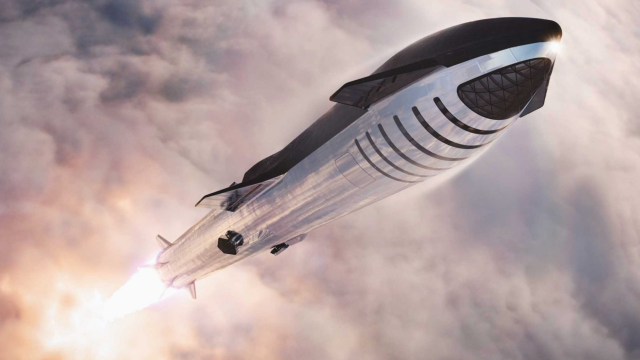Not content to keep things simple or easy, SpaceX plans to catch its upcoming Super Heavy booster rockets at the launch tower, allowing for subsequent relaunches a mere one hour later.
Not to be confused with the Falcon Heavy, the Super Heavy will serve as the booster stage for SpaceX’s upcoming Starship system. The second stage of the system will be Starship itself, which is designed to launch and land on its own. When paired with the booster, however, Starship will be transformed into a formidable launch system, capable of delivering cargo and dozens of passengers to Earth orbit, the Moon, and Mars.
We’re going to try to catch the Super Heavy Booster with the launch tower arm, using the grid fins to take the load
— Elon Musk (@elonmusk) December 30, 2020
The Super Heavy, like the Starship second stage, is still in development, and specifications are very much in flux. Originally, the Super Heavy booster was supposed to land with retractable legs similar to those seen on the company’s Falcon 9 reusable rocket. But as SpaceX CEO Elon Musk explained in a recent series of tweets, they’ve rejigged the concept.
“We’re going to try to catch the Super Heavy Booster with the launch tower arm, using the grid fins to take the load,” he tweeted in response to an inquiry. “Saves mass & cost of legs & enables immediate repositioning of booster on to launch mount — ready to refly in under an hour,” added Musk.
[referenced id=”1656925″ url=”https://gizmodo.com.au/2020/12/watch-live-spacex-tries-again-to-launch-a-starship-prototype-to-high-altitude/” thumb=”https://gizmodo.com.au/wp-content/uploads/2020/12/10/vtji4cf5exqqua6nft6p-300×168.png” title=”Watch Live: SpaceX Tries Again to Launch a Starship Prototype to High Altitude” excerpt=”After a last-second abort yesterday, SpaceX is back on track to send a prototype of its Starship rocket to a high altitude. You can watch the action live right here.”]
That SpaceX is designing a system capable of launching Starships at one hour intervals points to the company’s future ambitions. It remains to be seen if these gigantic boosters — which will measure 70.10 m tall (70 meters) and 9.14 m wide (9 meters) — can indeed be caught in this way, but Musk’s impressive track record means we need to take this prospect seriously.
Equipped with over two dozen Raptor engines, the Super Heavy booster will exert over 16 million pounds of force. By comparison, Block 2 of NASA’s upcoming SLS system will provide 9.5 million pounds of thrust.
With SN10 nearly complete and repairs being done at the landing pad, do you think this is something we will get to see in the next few weeks? ????#spacex #starship #Bocachica
(2100ft msl, 01/01/2020) pic.twitter.com/CMFIM4Rkvc— RGVAerialPhotography (@RGVaerialphotos) January 2, 2021
On December 12, SpaceX performed a high-altitude test of a Starship prototype rocket, which blew to pieces while attempting a landing. Musk described it as a “successful ascent,” adding that “we got all the data we needed.” New Starship prototypes are currently being readied for further testing, but no dates for these launches have been released.
